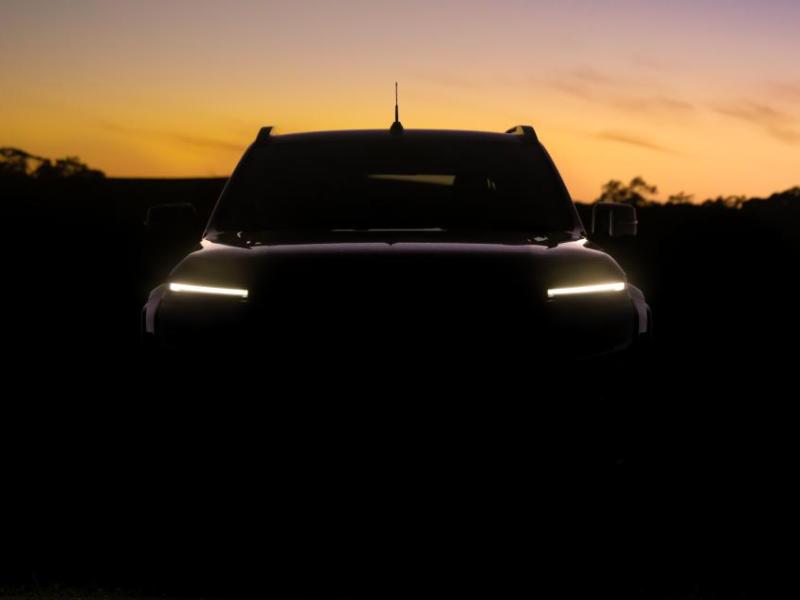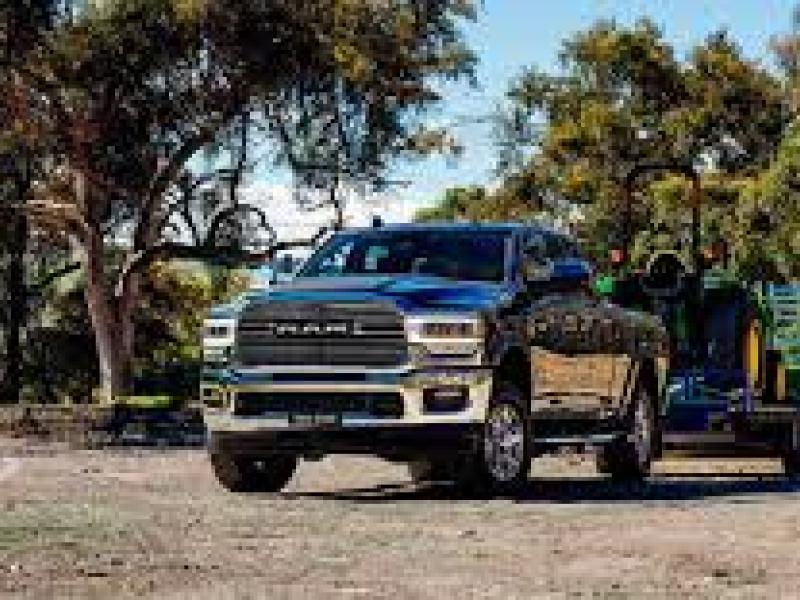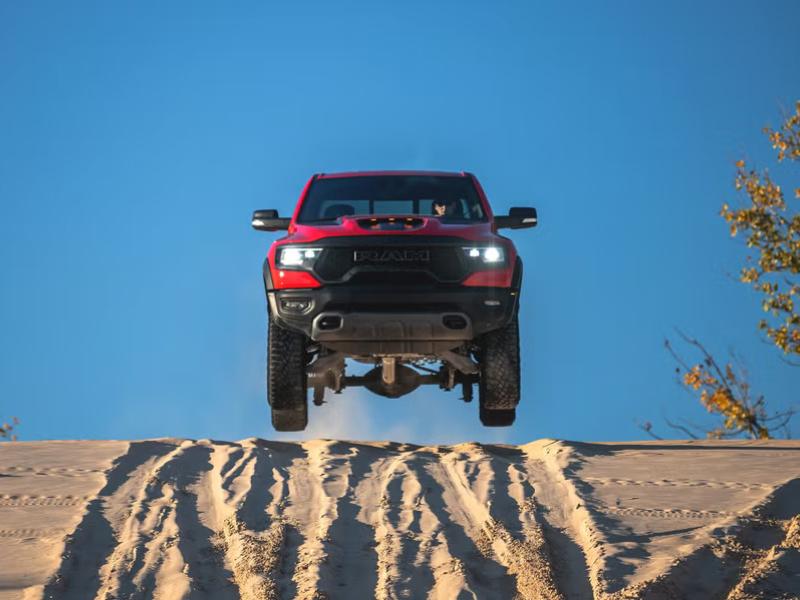Once it was the upstart, the young contender, taking on the establishment. These days the D-Max is well and truly proven and winning hearts and minds among owners who need their ute to be tough enough to handle some rough work and still buff up pretty smart afterward.
The D-Max is well-and-truly ensconced as our third top-selling dual cab these days, behind only the Toyota HiLux and Ford Ranger. For those who want a dual-cab workhorse that doubles as a second family car, it offers plenty.
Our LS D-Max arrived on 18-inch alloy wheels (7.5 inches wide) and 265/60 Goodyear H/T Wranglers. Dynamically it’s well sorted even without a load in the tray, ironing out main road and gravel imperfections nicely with good noise suppression and a relatively settled rear end.
Another great feature is its electric power steering, which is feather-light and makes the D-Max feel very wieldy around town in daily driving.
Drivers commented that forward vision in the D-Max was slightly better than in the Ranger, possibly due to seat adjustment range.
The front seats earned praise, supportive and ergonomically pleasing across the test group. They give good support in paddock driving but keep the driver well informed of what the tyres are dealing with. Like Ranger, D-Max access has been well considered, grab handles well placed. Though it rolls on 18-inch wheels and has a better ramp-over angle, the D-Max is a tad easier to climb into than the Ranger.
Isuzu’s 3.0-litre four-cylinder turbodiesel is built on truck technology and produces 140kW (at 3600rpm) and 450Nm (at a very useful 1600-2600rpm). The 3.0-litre diesel doesn’t lead the segment when it comes to refinement, although it’s certainly not as coarse or clattery as the engines used in older-generation D-Maxes. Under way it has a robust low rumble, not at all unpleasant.
Subjectively, the engine is shoulder to shoulder with the Ranger’s twin-turbo four cylinder despite the latter’s higher output and ten-speed auto.
It never feels slow and will even chirp the rear tyres at times when unladen. In fact, on our subjective seat-of-the-pants meter, it gets up and goes much more quickly than it really has any right to. Certainly, the XLT never outpaced the D-Max on the farm.
While the Aisin transmission only has six gears, they’re well-spaced and the driveline creates good speed-retaining downhill engine-braking by dropping a cog with decisiveness.
One of our drivers did find the D-Max ‘hunted’ in lower gears on-road, but overall it was smooth, even in off-road use.
The best thing? A lock-up torque converter works on the top five ratios. That saves fuel and is a confidence booster in slippery or choppy going. There’s ‘shift on the fly’ switching from 2-hi (rear wheel drive) to 4-hi, and a rear diff lock.
Safety? There’s a lot. D-Max is a five-star truck in ANCAP testing, the organisation saying Isuzu has ‘democratised’ safety across the entire range, stating that “all variants in the D-Max range – single cab, space cab, double cab, and cab chassis – provide the same high level safety features, technologies and performance as standard.”
Isuzu’s Intelligent Driver Assistance System (IDAS#), which covers an extensive list of both active and passive safety features, is standard across every D-MAX model. Using state-of-the-art sensors and a stereo camera system, the D-MAX constantly monitors the surrounding environment for danger. If it detects that a collision is imminent, the system will work to help the driver to defuse dangerous situations using onboard alert systems and automated functions.
The driver-assist features include adaptive cruise control and blind-spot monitoring (which automatically turns off when the trailer brakes and lights are connected).
The camera-based lane-keeping aids are okay and can be (should be) switched off when outside the city limits with their well-painted lines.
There’s also a speed limit alert that chimes if you exceed the posted limit. It can be ‘numbed’ to engage at 10km/h over the limit or shut it off altogether. And it stays off once set that way.
“Turn off into the grass here,” said Duncan, and we did.
A grassy paddock on a decent slope lay in front of us. Knee-high grass, carrying the moisture of last night’s rain was under all four tyres. Here we go.
Without a murmur or swerve, though, the D-Max tackles the slippery side slope and heads off uphill with hardly a stumble. Impressive.
Down, around and off up the narrow farm track, we have a couple of further opportunities to experience the D-Max’s ability on damp grass and slippery clay. It’s not radical stuff but gives an opportunity to feel the diffs working together to maintain forward travel.
“Okay, turn off here,” said Duncan, and we did.
Until workplace safety people tied things up with red tape, Duncan ran 4WD driver training on Pukerau. The farm was big enough to offer plenty of drive-through and even winch-through scenarios. These days, the driver training is gone, but 4WD manufacturers still book days on the 300-acre property to launch new models.
‘Here’ was a stretch of lush pasture with a view all the way to the Coromandel.
In the grass, Duncan pointed out, were a series of concrete plates and ruts designed to test axle articulation. This is an exercise best tackled in 4WD with diff lock engaged.
The D-Max went first, edging its way through while we admired its under-pinnings. Even with a rear wheel stuck high in the air, the truck maintained forward momentum, unfussed. The truck’s 240mm ground clearance and 19-inch alloy wheels undoubtedly helped it run through the obstacle without hanging up on the ground; they also ensured the side steps ran cleanly through without scraping. The numbers: approach angle 30.5 degrees; departure angle 24.2 degrees, ramp-over 23.8 degrees.
Sidling across hillsides in long slippery grass, the H/T tyres performed well, though we didn’t have a chance to try them in mud and would expect that to be less fun and more drama.
In summary, we found the D-Max a friend to the rural sector, working hard in loose surface settings and very capable in the rough. Its grip is excellent, even on the H/T treads chosen. A tough partner for any mission, and one that scrubs up nicely for weekend fun.






